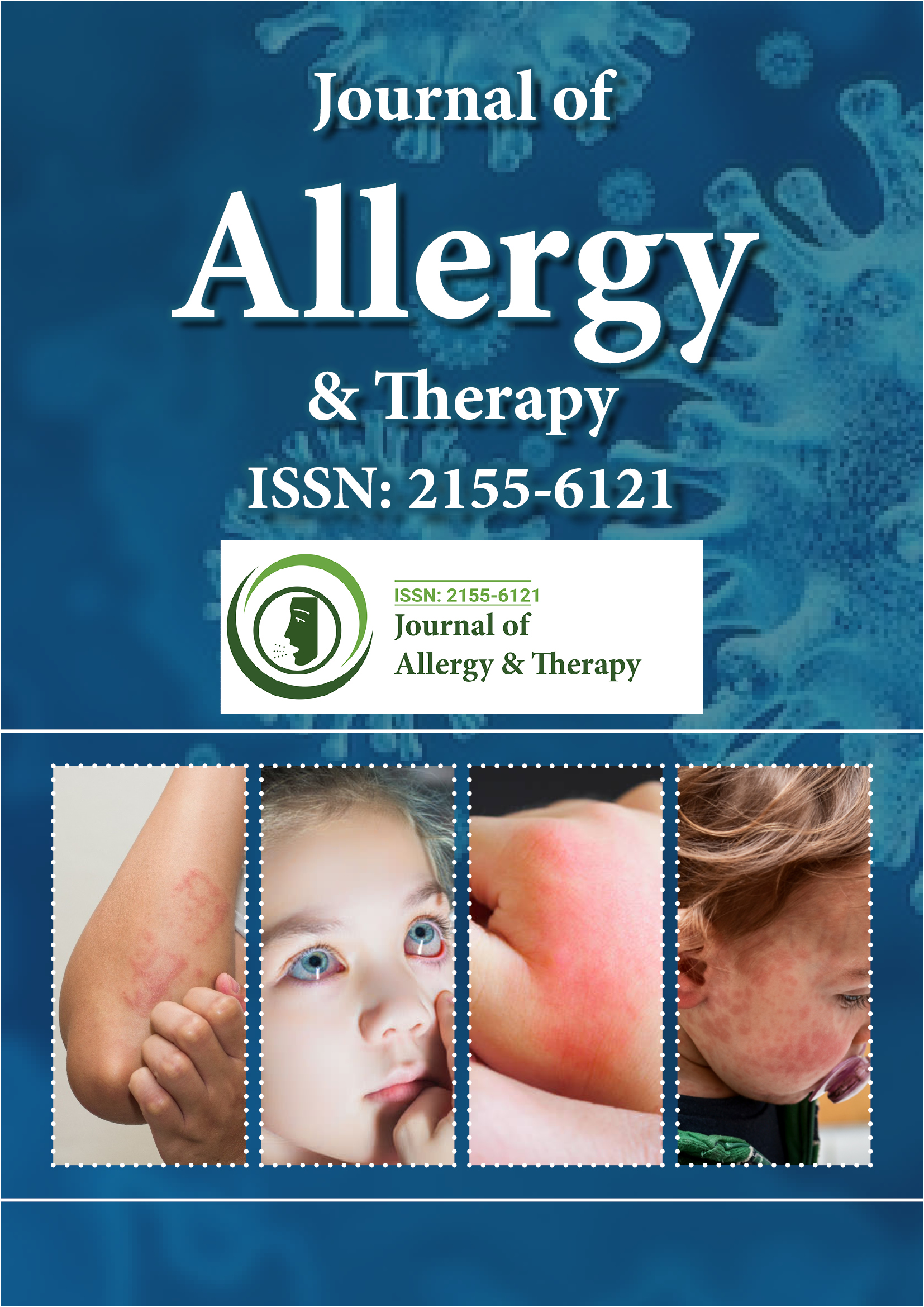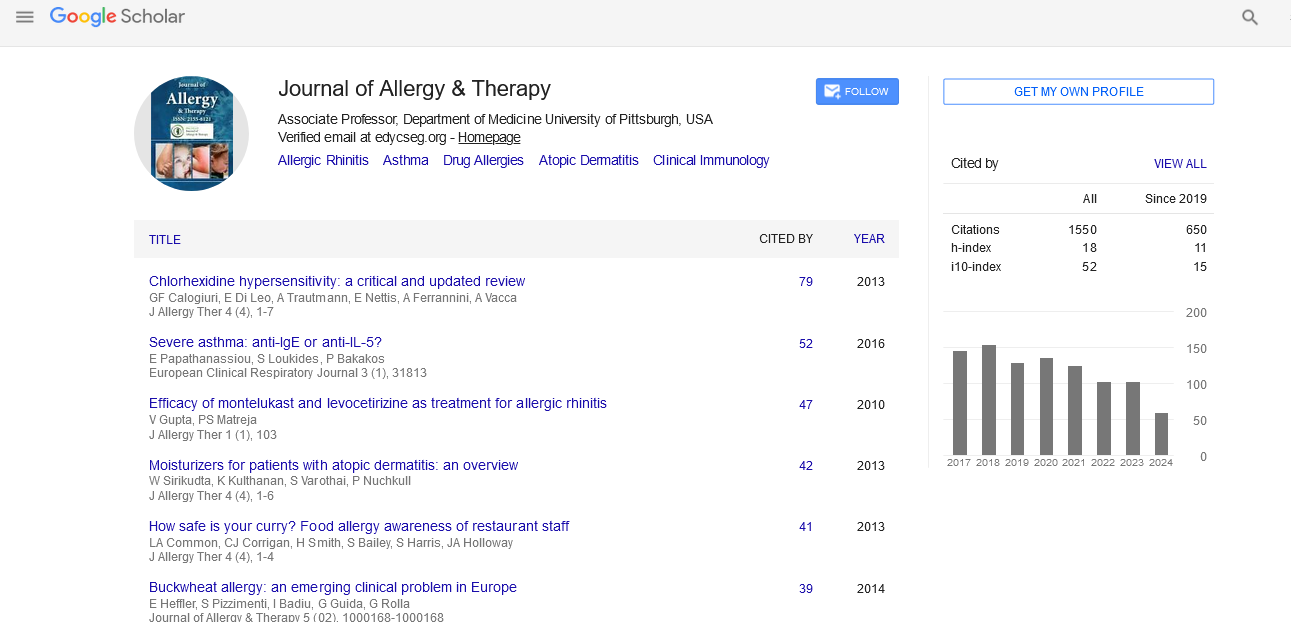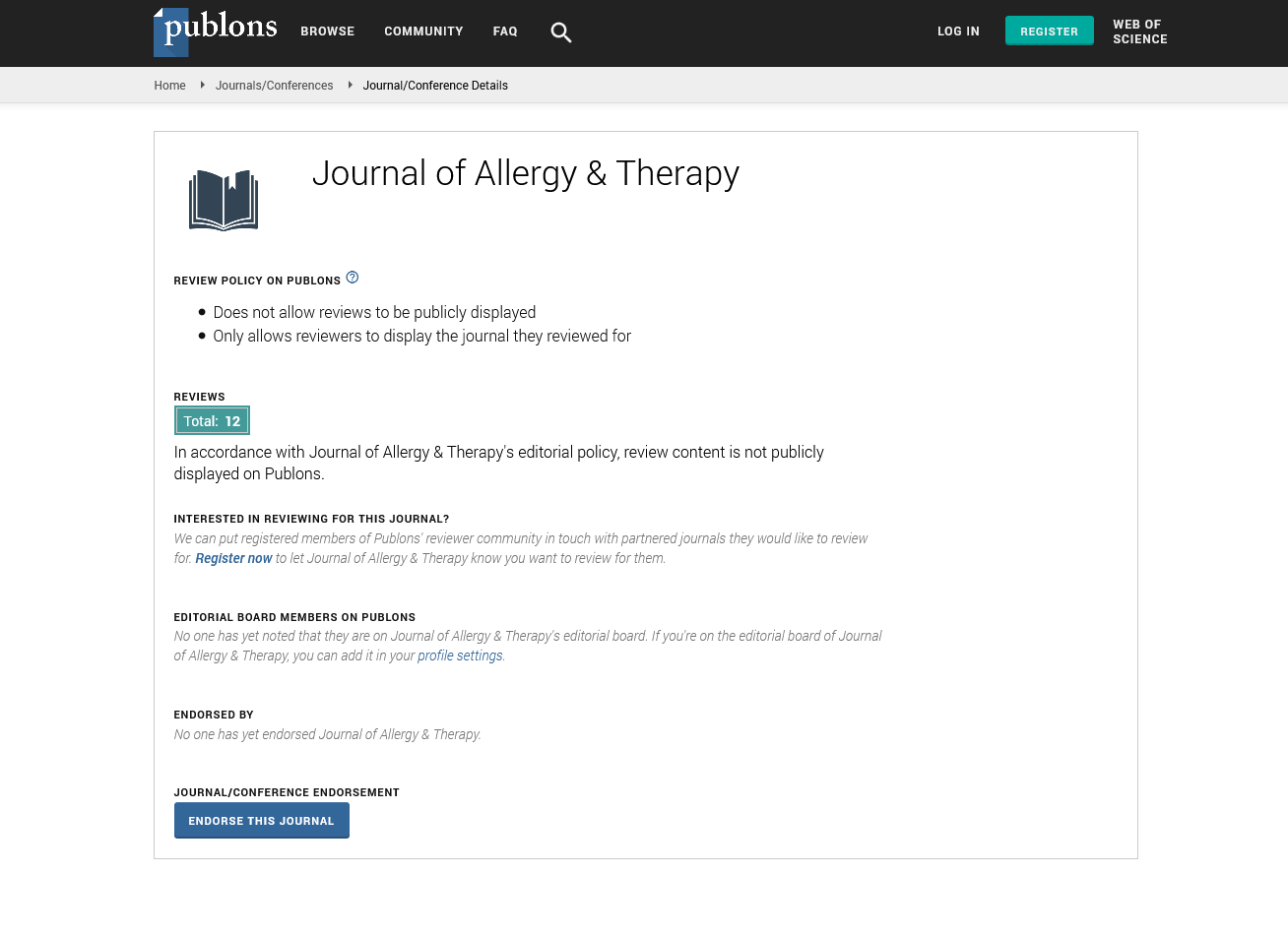Indexed In
- Academic Journals Database
- Open J Gate
- Genamics JournalSeek
- Academic Keys
- JournalTOCs
- China National Knowledge Infrastructure (CNKI)
- Ulrich's Periodicals Directory
- Electronic Journals Library
- RefSeek
- Hamdard University
- EBSCO A-Z
- OCLC- WorldCat
- SWB online catalog
- Virtual Library of Biology (vifabio)
- Publons
- Geneva Foundation for Medical Education and Research
- Euro Pub
- Google Scholar
Useful Links
Share This Page
Journal Flyer

Open Access Journals
- Agri and Aquaculture
- Biochemistry
- Bioinformatics & Systems Biology
- Business & Management
- Chemistry
- Clinical Sciences
- Engineering
- Food & Nutrition
- General Science
- Genetics & Molecular Biology
- Immunology & Microbiology
- Medical Sciences
- Neuroscience & Psychology
- Nursing & Health Care
- Pharmaceutical Sciences
Perspective - (2022) Volume 13, Issue 12
Relationship Between Chronic Obstructive Pulmonary Disease and Chronic Rhinosinusitis
Smith Grigorios*Received: 28-Nov-2022, Manuscript No. JAT-22-19230 ; Editor assigned: 02-Dec-2022, Pre QC No. JAT-22-19230 (PQ); Reviewed: 16-Dec-2022, QC No. JAT-22-19230 ; Revised: 23-Dec-2022, Manuscript No. JAT-22-19230 (R); Published: 30-Dec-2022, DOI: 10.35248/2155-6121.22.13.319
Description
Among all causes of death, Chronic Obstructive Pulmonary Disease (COPD) is the fourth most common. The burden of disease rises as the population ages and risk factors persist. People who are affected might have a decline in quality of life and COPD-related comorbidities. Uncertainty exists regarding the prevalence and effects of upper airway disease as comorbidity in COPD. Chronic Rhinosinusitis (CRS) is 15% more common in people with asthma than it is in the general population of Europe and the United States. Importantly particular treatment may enhance the quality of medical outcomes.
The role of upper airway disorders on COPD outcomes is still unclear. An earlier study found a link between sinusitis and unsuccessful treatment for COPD exacerbations. Others did not discover a connection between COPD severity and upper respiratory tract symptoms. Despite the fact that the majority of studies found a link between COPD and upper airway conditions like CRS, the evidence is still not definitive and does not include a control group or sino-nasal imaging, two essential components of a comprehensive evaluation. Using a standardized questionnaire, the SNOT-20, and Computed Tomography (CT) of the para-nasal sinuses, we looked at CRS symptoms in COPD patients and a control group to determine the prevalence of CRS in COPD and its impact on COPD outcomes. In contrast to the control group, we predicted that the prevalence of CRS is higher in those with COPD. Additionally, because the trial lacked sufficient power to detect this endpoint, we attempted to assess the potential influence of CRS on COPD outcomes.
Only a few cases were recorded, notably due to the limited number of controls; for example, only one patient who did not have COPD met the criteria for CRS, suggesting that sparse data bias may be at play. Additionally, both the control group and the COPD may have been impacted by selection bias. Since a large number of COPD patients with advanced disease declined to participate, the exacerbation rate was low. Additionally, the control group may have suffered from selection bias because, for ethical reasons, only controls that had already undergone a CT were contacted. Despite the fact that the control group may not have been typical of the entire population, the high proportion of co-morbidities allowed us to distinguish between quality of life impairment caused specifically by diseases and impairment caused by all disorders. Due to the same difficulty, we were unable to compare smoking status between the two groups, therefore we cannot rule out the possibility that smoking was the sole cause of the difference in prevalence between the two groups. We had to accept that the frequency of never smokers was high with 68% when choosing our control group based on a prior CT scan.
Second, quality of life related to the condition was decreased. Despite the fact that patients with COPD and controls had equal rates of abnormal SNOT-20 and abnormal SNOT-QoL showing general quality of life, the scores of RQLQ reflecting disease specific quality of life in patients with CRS were significantly different. Since the total number of co-morbidities and psychological disorders did not differ across groups and 50% of the SNOT-20 questions are not specific to the nose, this may be the cause of the lack of variation in overall quality of life.
Interestingly, 52% of controls had positive SPT results, and the most common symptoms were runny nose and sneezing, which may have been a sign of an allergic condition. Additionally, there is strong evidence for neutrophilic inflammation in COPD but eosinophilic inflammation may be present in allergy illnesses. This tendency towards decreased nasal NO in COPD may indicate an eosinophilic rather than a neutrophilic inflammatory process.
Citation: Grigorios S (2022) Relationship Between Chronic Obstructive Pulmonary Disease and Chronic Rhinosinusitis. J Allergy Ther. 13:319.
Copyright: © 2022 Grigorios S. This is an open access article distributed under the terms of the Creative Commons Attribution License, which permits unrestricted use, distribution, and reproduction in any medium, provided the original author and source are credited.


